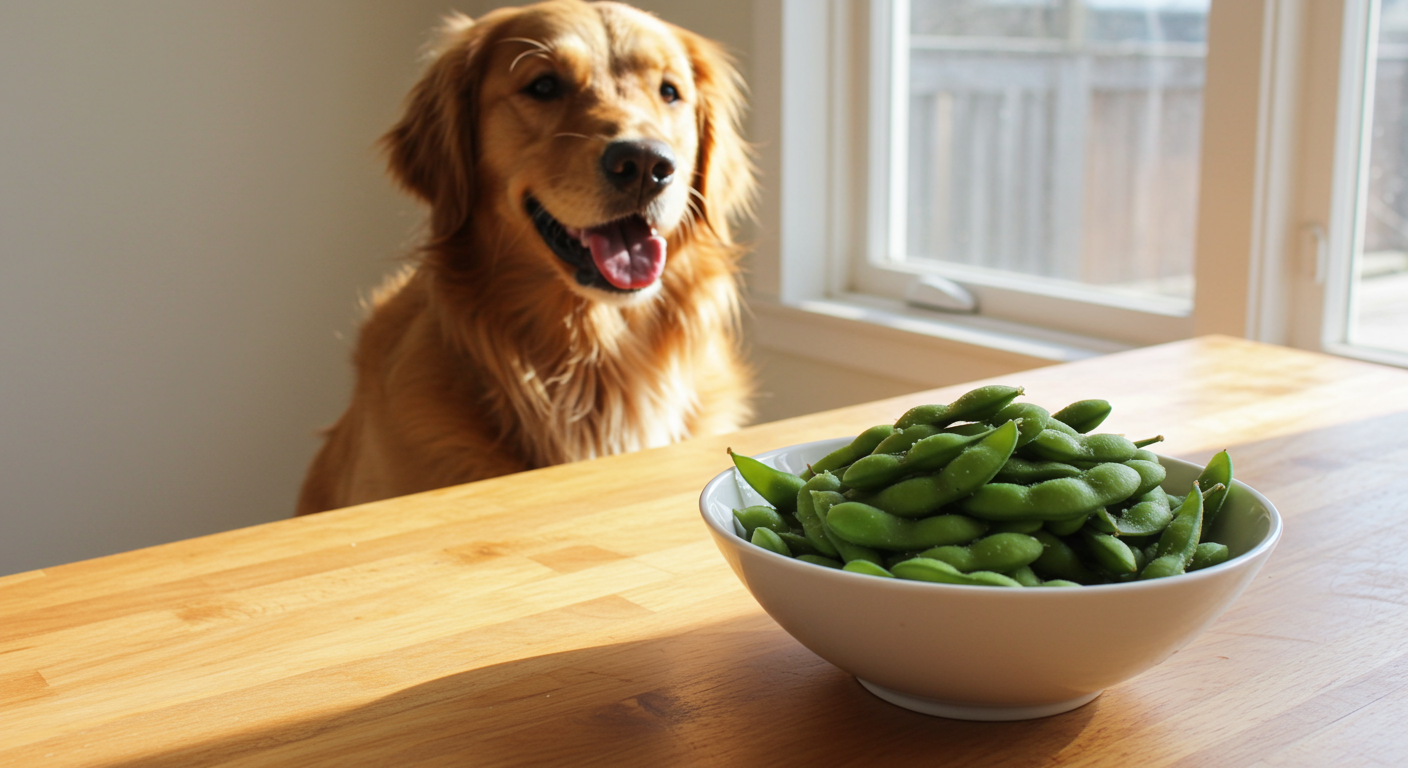Yes—dogs can enjoy plain, shelled edamame in small amounts as a healthy, occasional treat. Edamame is simply immature soybeans, packed with nutrients that can offer some benefits to your pup—as long as it’s served correctly and in moderation.
Let’s explore the good, the bad, and how to safely offer edamame to your dog.
Why Edamame Can Be Good for Dogs
Edamame may be a surprising but nutrient-dense snack for dogs. When served plain (with no salt, oil, or spices), it offers several benefits:
- Low in Calories: With only about 14 calories per tablespoon, edamame is a guilt-free option for pups watching their weight.
- Rich in Plant-Based Protein: Protein helps build muscle, repair tissues, and maintain healthy skin, fur, and nails.
- Packed with Fiber: Fiber helps support digestion and keeps your dog’s bowel movements regular.
- Full of Vitamins & Minerals: Edamame contains vitamin C, vitamin K, calcium, folate, and more—supporting immunity, blood clotting, and bone health.
When Edamame Can Be Harmful
Even though it’s safe in small amounts, edamame isn’t risk-free. Here are a few concerns to be aware of:
1. Digestive Upset
Edamame is high in fiber, which may lead to gas, bloating, or diarrhea—especially if your dog isn’t used to it. Always start with a small portion.
2. Choking Hazard
The edamame pod is tough and fibrous. While not toxic, it can be hard to chew and may lead to choking or intestinal blockage. Always remove the beans from the pod before feeding.
3. Soy Allergies
Edamame is a soybean. While soy isn’t a common allergen in dogs, it’s still possible. Watch for symptoms like:
- Itchy skin
- Hair loss
- Digestive issues
- Swelling or breathing problems
If you notice any of these, stop feeding edamame and call your vet.
4. Seasonings and Additives
Garlic, onion, salt, and oils—often found in pre-seasoned edamame—can be toxic to dogs. Never give your pup flavored or store-bought edamame snacks.
How to Safely Feed Edamame to Dogs
Want to let your dog try this bean? Follow these tips for a safe and tasty experience:
✅ Always remove the pod
✅ Use plain, unsalted edamame
✅ Cooked or steamed is best (no butter or oil)
✅ Serve as a treat or food topper
✅ Start small and monitor for reactions
How Much Edamame Is Safe?
Like all treats, edamame should make up no more than 10% of your dog’s daily calories. Here’s a quick guide:
- 🐶 Small dogs: 1–2 tablespoons, 1–2 times a week
- 🐕 Medium dogs: 2–3 tablespoons
- 🐕🦺 Large dogs: 3–5 tablespoons
Overfeeding can lead to stomach upset or throw off your dog’s balanced diet.
Healthy Veggie Alternatives to Edamame
If your dog doesn’t love edamame—or you’re looking to mix it up—try these other safe veggies:
🥕 Carrots
🥦 Broccoli (in moderation)
🎃 Pumpkin
🥒 Cucumber
🍠 Sweet potatoes
🫑 Bell peppers
🥬 Spinach
🥬 Lettuce
🌱 Peas
🥬 Cabbage
🌽 Cauliflower
🌱 Zucchini
🌱 Green beans
🌿 Asparagus
🍏 Apples (without seeds)
Always introduce new foods gradually and check with your vet, especially if your dog has health issues.
Final Woof
Yes, dogs can eat edamame—as long as it’s plain, shelled, and served in moderation. This high-protein bean can be a healthy snack or a fun training reward. But like any new food, it’s important to introduce it slowly and watch for any signs of allergies or digestive trouble.
If you’re unsure whether edamame is right for your dog, consult your vet for personalized advice.




